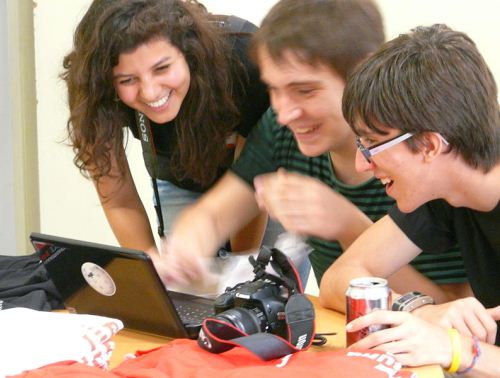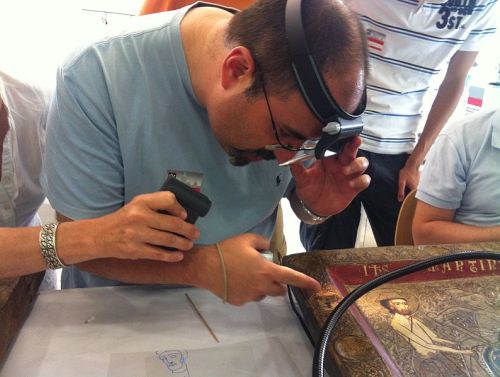How Europeana helps Wikipedia editor and GLAM ambassador
Today, Àlex Hinojo, GLAM projects director at Amical Viquipèdia, tells us how Europeana is used to enhance Catalan Wikipedia articles.
As a GLAM Ambassador (galleries, libraries, archives and museums) in Barcelona, I work to facilitate and improve the relationships between the Catalan GLAM sector and the local free knowledge community. Once heritage is digitised, catalogued, wikified and put online, it must come back to the people, so I'm looking for new ways to engage people with cultural heritage and share cultural commons.
Since I discovered Europeana, I use it more and more every day.

Local Wikipedians during an outreach activity in Barcelona, Wikimedia Commons, CC-BY-SA 3.0
As a Wikipedia editor
Wikipedia editors are always looking for references. Wikipedia does not publish original thought: all material in Wikipedia must be attributable to a reliable, published source so, when improving an article, we need to ensure all the facts that we write are correct. Europeana is really useful for us for several reasons:
- It has a huge amount of specific heritage indexed content.
- The interface is available in several languages so we can check out a foreign collection data set without problems.
- The ‘Cite on Wikipedia’ button including the wiki-markup text is extremely helpful for referencing content quickly and easily.
- The ‘Similar content’ feature lets us discover new items that can help us to hone our articles.
- We can check the copyright status of an item in a collection.
It is very important for us that metadata is well documented. When it describes the object in a formal and structured way, it is easy for us to find and re-use it. As a proposal for improvement, I would include some kind of ‘registry fix’ system where Europeana’s visitors can propose fixing typos or little mistakes on data sets.

A Wikipedian co-working with a restorer during a Backstage Pass at the Museu Nacional d'Art de Catalunya, Wikimedia Commons, CC-BY-SA 3.0
As a GLAM Ambassador
We are working on projects with more than 25 GLAM institutions, like the Fundació Joan Miró, Museu Picasso (where we co-organised Hack4Europe in 2011). Some of them are already cooperating with Europeana, like the Performing Arts Museum in Barcelona. In our experience, Wikipedia and Europeana are both giving GLAMs the excuse to open up their collections. They are like a little seed planted inside the GLAM that is growing slowly but constantly.
When we talk to an institution that is already working with Europeana, things are easier: they are aware of the reasons for opening up content, they understand that aggregating collections has a powerful impact on reach and they even know most of the technical terms we use.
In 2013, we are focusing our efforts on GLAM-educational projects and a project in cooperation with the Catalan Public Libraries Network. Librarians are learning not only how to contribute to Wikipedia, but also how to use it as a tool for engaging their users and to reassess their collections and local funds. In education, we are working with a research department of the University of Barcelona, where more than 100 students are improving Modernisme-related articles in the Catalan Wikipedia, using Europeana, among others, as a great documentation source.
Follow Àlex on Twitter at @kippelboy
